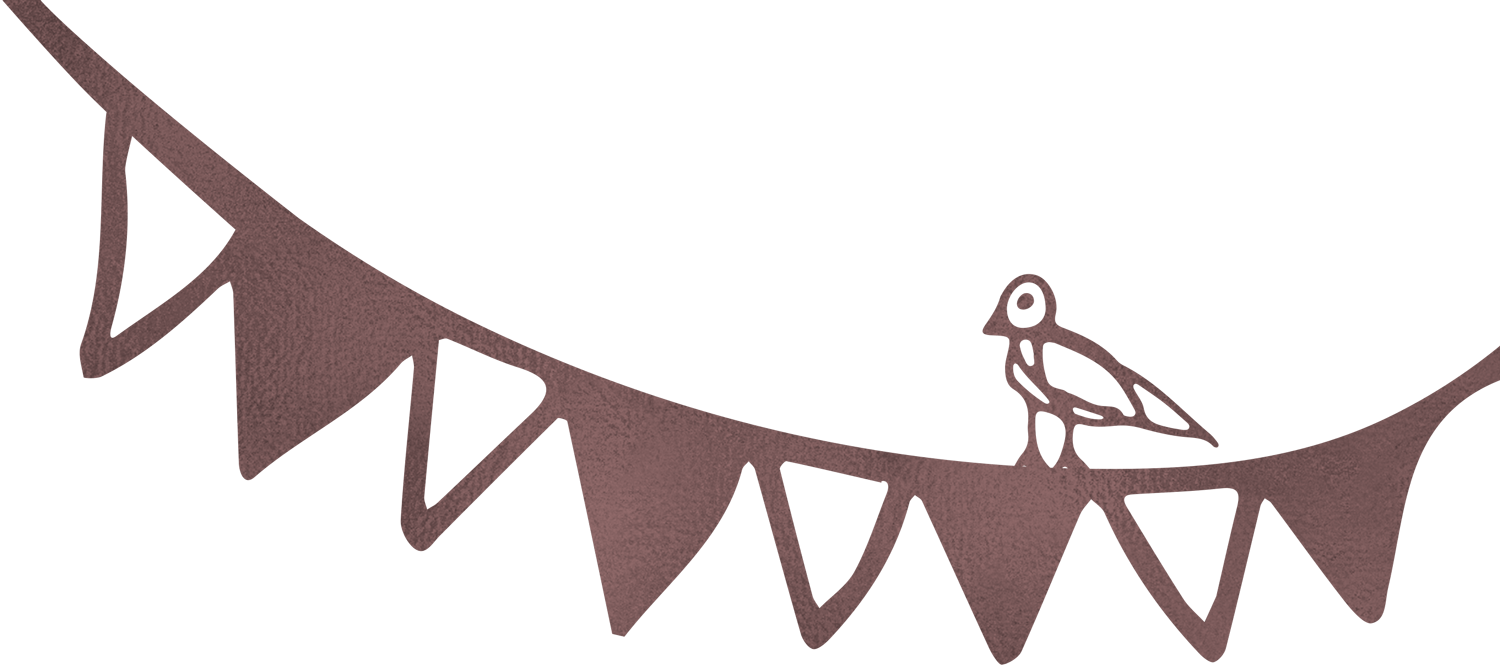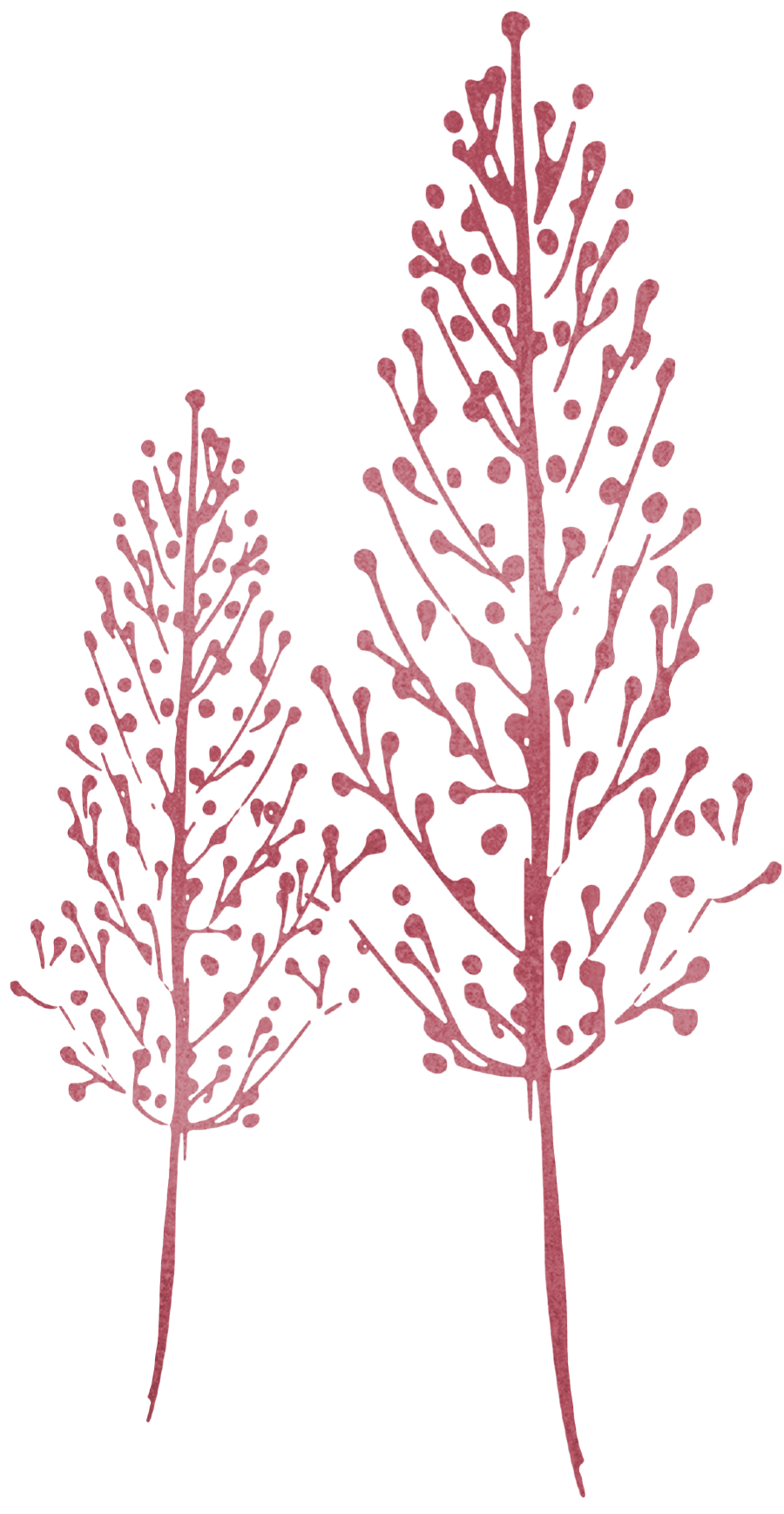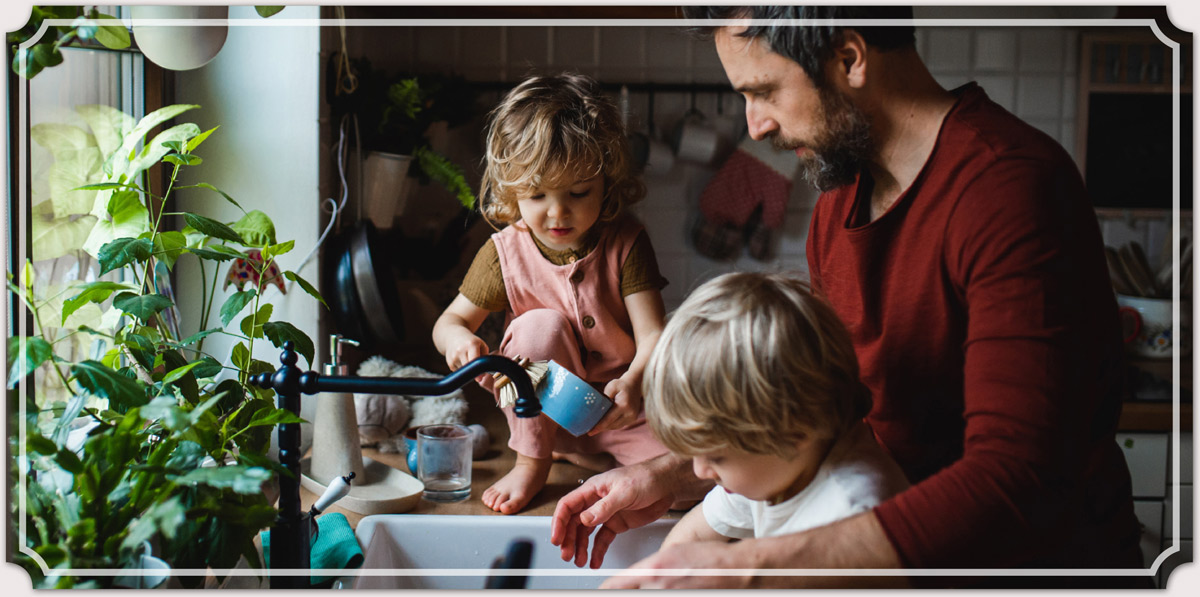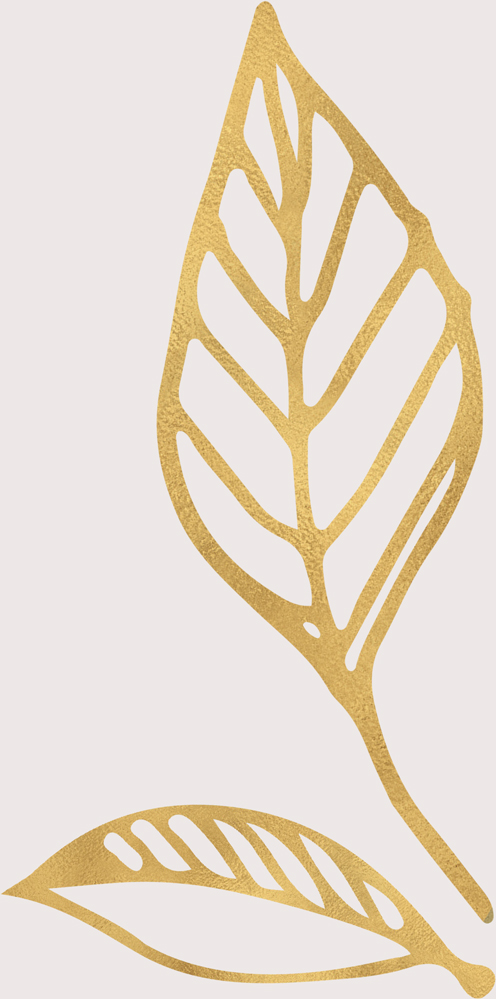




Fortunately, we have about eighteen years to teach our children these things, and when we hold a balance between steady progress and lightheartedness, they can leave our home prepared to take care of themselves and others.
One of the beautiful things we get to model and teach our children is how each family member helps with the care of the home. Many people call these actions chores, but we like to think of them as contributions. In a family, everyone contributes according to their abilities. Everyone needs to play a part in making the home run smoothly. In our family, contributions look like making your bed, washing and putting away your clothes and dishes, sweeping the floor, wiping the counters after dinner, and cleaning your room. Chores are jobs that children can do if they want to earn some spending money, such as picking up pine cones in the yard, weeding the garden, deep cleaning the bathrooms, or washing the car. We believe that contributions and chores are a great way to train and empower your children as they grow closer to independence.
We are often asked when you should start having children contribute to taking care of the home and where they should start. The leader of the elite Navy Seals says, “If you want to change the world, start off by making your bed.” I think we would all agree that we want to raise world changers, so as soon as you move your children out of their baby beds, encourage them to “make their bed” every morning. Some of us parents get ourselves and our children in trouble because our expectations are too high for what a bed made by a two-and-a-half-year-old will look like. Please don’t expect them to tuck the corners and chop their pillows. Their version of a made bed will look like covers pulled up and pillows somewhere on the bed. One of the best ways to teach them the importance of a made bed is simply to make your bed every morning, inviting them to help you make your bed. And then you help them! This lighthearted teamwork approach will be a memory they can carry with them into adulthood, and the consistent, repetitive nature of this contribution will stick with them as they approach other tasks in and out of the home.
If we want our young children to contribute, we need to make things accessible to them. When my children were preschoolers, I (Kathy) kept their plates and cups in a low level drawer. Lesli moved all her dishes to two low shelves on her center island. This way they could get their own plates and cups for making themselves a snack or prepare for mealtime. They could also help load and unload their items into the dishwasher. You will find that most children actually want to help because it often means spending time with their parents and siblings. We just need to guide them and make things available to them. When children are young and can’t quite read, pictures are the best way to remind them of their daily contributions. You can even make a chart with pictures so your children can have the satisfaction of checking off their task as contributions are completed. For preschoolers, a contribution chart might include making their beds, putting the dishes in the dishwasher, brushing their teeth, putting their pajamas away, and setting the table.
The most important thing to remember when it comes to teaching your little ones to contribute is that unrealistic expectations ruin relationships. Please keep your expectations low when it comes to the quality of their work. If they spill the milk while cleaning up their cup, be lighthearted, and use it as a time to remind them that accidents happen and simply clean it up. A lecture is not necessary at this time and will likely do more damage than good. Try to focus on the effort rather than the outcome. The consistency of the practice is key, and the precision of the skill will improve as they age.
In our book, The Homegrown Preschooler, Lesli and I share several ideas for empowering children as they contribute to the care of the home. One of our favorites is the Clean Floor Dance Party. Mopping the floor is Lesli’s least favorite activity, and turning it into a fun and silly playtime activity was as much for her benefit as the children. Purchase a big pack of white men’s tube socks at your favorite discount store. Add spray bottles of vinegar and water or your favorite non-toxic cleaner, and some fun music, and voila… you have a bunch of happy kids doing the twist in their socks and sliding around on the damp floor. Drag the baby and toddlers around on a beach towel to dry everything up! You will end up with lots of laughs, fun memories, and a sparkling clean floor.
Another way to include little ones is to give them dishes to wash in a plastic dish bin on the floor. We love the gray heavy-duty ones that we find at Sam’s Club or other restaurant supply companies. If you fold up some beach towels on the floor and add a few inches of soapy water, a toddler will happily wash the breakfast dishes while you read aloud to older children. We did this often, placing the dish pan in the middle of the family room while we started the day’s reading. We praised our toddlers heavily for their contribution!
Folding laundry is one of our favorite activities with little ones! Newly talking babies can help identify clothes to people. We became amazed at how much detail our toddlers were taking in as we asked, “Whose shirt is this?” and they were able to match all the clothes to the people in our family as excitedly as though they were on a TV game show. We would help little ones fold towels saying, “First in half, and then in quarters.” This was a natural way of even introducing basic geometry in daily life. Learn to talk them through all of the household activities, even though it takes longer. Label things, invent fun, silly jingles, and keep a smile on your face!

Later we moved to a daily/weekly chart for the children, rotating the chores occasionally so that everyone got to learn different skills. Now we are in the more challenging time of having many teenagers and young adults in the house whose varying work schedules and activities make it harder to “schedule” tasks. Lesli has found that it works to make a list of items that need to be done, and as the teenagers wake up, they pick several items off the list. She has noticed that they are more inclined to not sleep in late if they know they are going to get the last pick of the housekeeping duties! Do not be afraid to adjust or try different systems in order to find something that works for your family.
It is also important to have good tools readily available for little ones. We purchased child-size brooms when our children were little. An old-fashioned carpet sweeper is a great tool for little ones to use. Thankfully, there are many wonderful recipes for non-toxic homemade cleaning products online. You can put together a little cleaning caddy of everything you need to clean a bathroom and walk your children through the process. It is very inviting to have tools and potions ready for the task, arranged in an attractive manner. Our children loved simple aprons and colorful feather dusters! Lesli’s grown children were recently arguing about which one would inherit the purple feather duster. It is amazing the things that your children will attach fond memories to!


